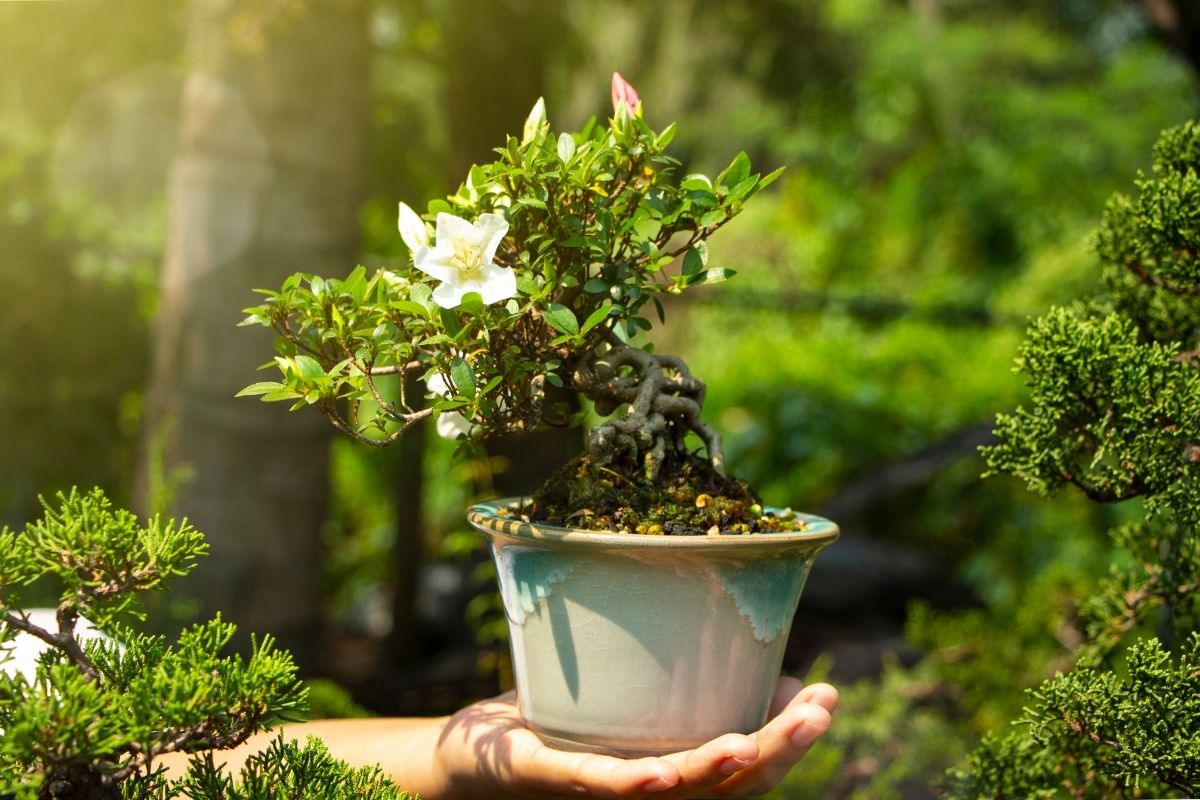The gardenia bonsai tree is popular among bonsai enthusiasts and beginners alike.
Why?
When kept indoors as a bonsai plant, a flowering bonsai will fill the space with a delicious perfume.
Luckily, caring for a gardenia bonsai indoors isn’t all that difficult to do, as long as you understand the basics of bonsai care.
Think: acidic soil, lots of pruning, a humidity tray, and bright sunlight.
Once you’ve got these basics down, you’ll be enjoying the soothing company of your fragrant little bonsai plant in no time.
location and temperature
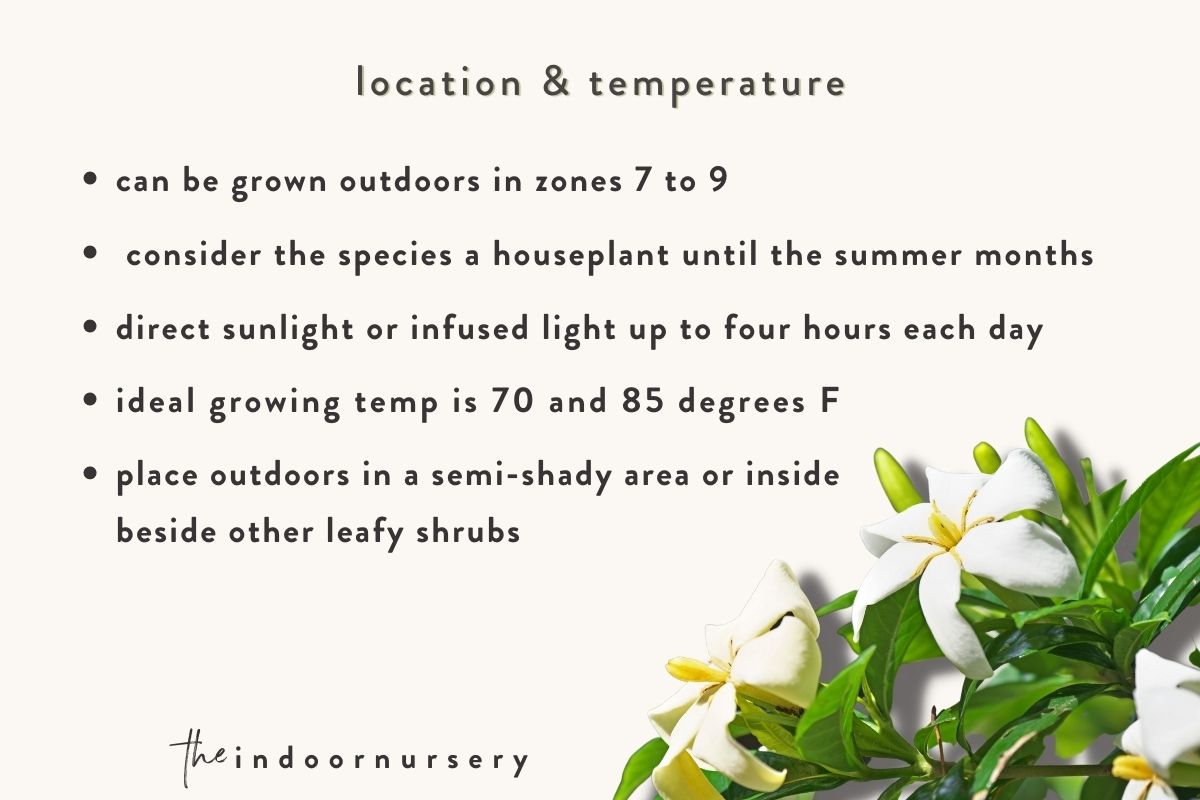
Most people prefer to cultivate and grow a gardenia bonsai because of its remarkable fragrance, strikingly beautiful flowers, and elegant appeal. The shrub is known for its glossy green leaves and delicate white flowers, which can be traced back to tropical Asian roots.
The main species of gardenia, cape jasmine, is from the tropical regions of Southeast Asia. As such, it’s a tropical plant and is most comfortable in comparable conditions.
While this plant may be grown outdoors in zones 7 to 9, you may consider this species as a houseplant until the summer months. By doing so, you can protect your gardenia from being exposed to extreme or freezing temperatures that are detrimental to its health.
Gardenia bonsai trees require exposure to direct sunlight or infused light up to four hours each day to enhance foliage and flower growth. Ideal temperatures during the plant’s active growing season are between 70 and 85 degrees F, which is from spring to fall. During winter, though, it may be exposed to an area with temperatures not going below 45 degrees.
Since the plant needs extra humidity, you should place it beside other leafy shrubs or next to a humidity tray filled with water and pebbles. However, it is not advisable to allow water to touch the planter’s bottom, so you can prevent overwatering the plant. Something like this would be perfect:
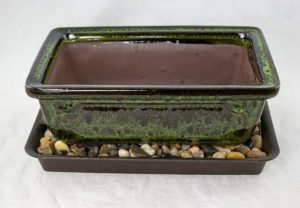
You may also consider raising the humidity around the plant by misting the leaves as often as possible or using a plant humidifier.
You may also place the gardenia outdoors in a semi-shady area when extreme temperatures have already passed. It is likely for the soil to dry out quickly outdoors, so make sure you adhere to the prescribed watering requirements for your gardenia.
watering the plant
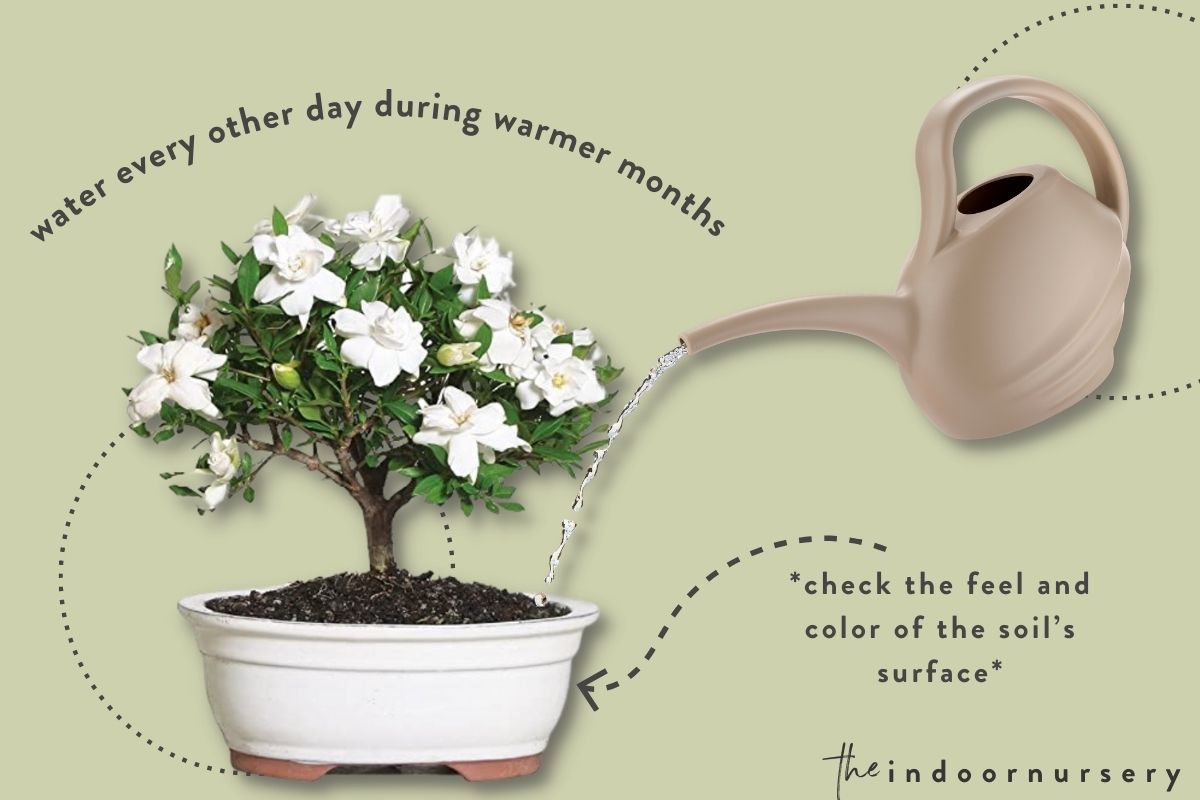
Make it a point to keep the soil moist without being soggy. During warmer months, you may have to water your gardenia bonsai tree every other day. The best way to determine if your gardenia plant needs water is by checking the feel and color of the soil’s surface.
The soil tends to have a lighter color once it dries up, and the surface feels quite dry to the touch, which means you need to water the plant.
Place the gardenia in a shallow dish with about 2 inches of filtered water, and allow the plant to soak moisture for at least 20 minutes or when the soil starts to feel and look moist. In case the soil dries out completely, simply immerse the pot in water for 5 minutes or more until the soil is completely wet.
pruning the bonsai
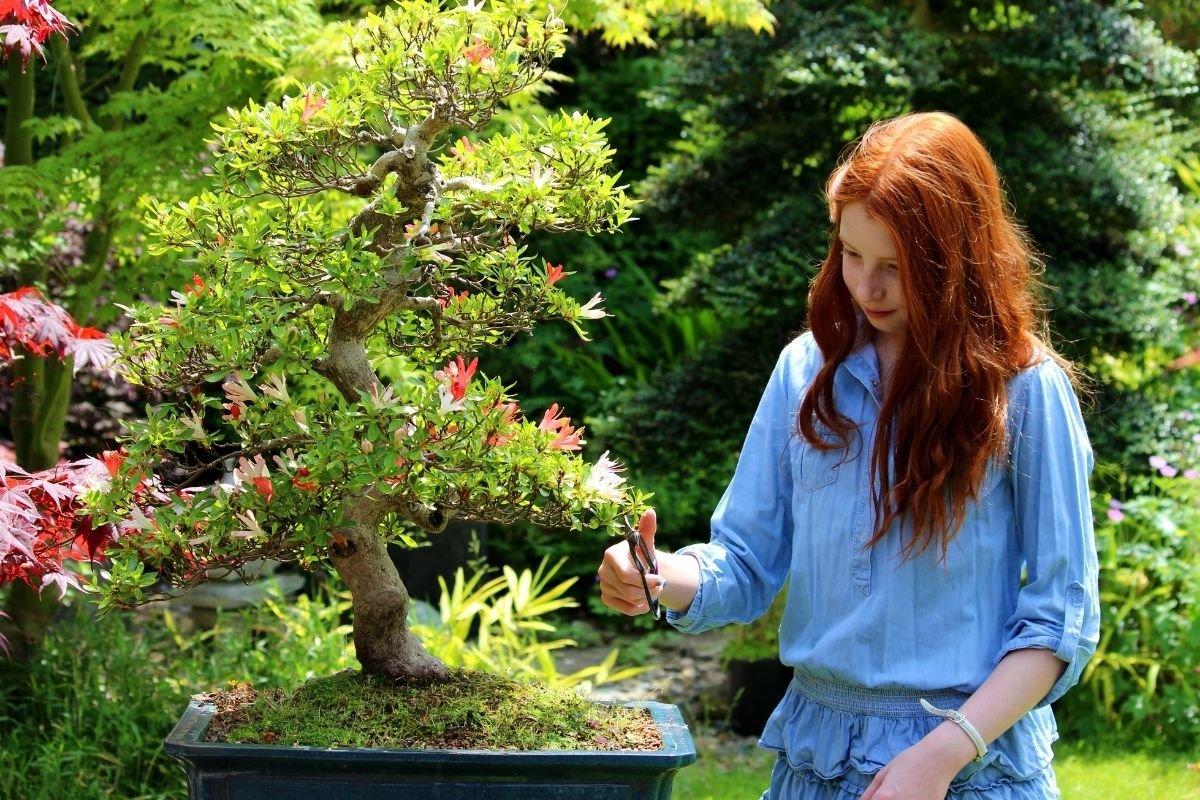
In the early spring, you may begin cutting long and unbranched growths that will maintain the plant’s bushy appearance. You can also shape the bonsai plant with wires, depending on your skill and daringness. A pruning kit like this one will grow with you as you explore your hobby.
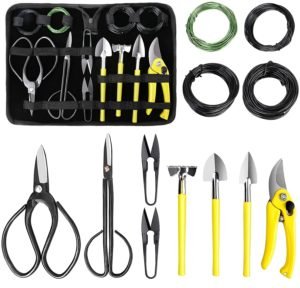
When pruning, just keep the cut above the leaf joint. Since gardenias have flower buds growing at the ends of their branches, you should avoid pinching out all branches. After flowering, then this is the time to prune these branches to enhance your plant’s shape.
This video walkthrough shows you how to prune a gardenia bonsai plant.
fertilizing gardenia bonsai trees
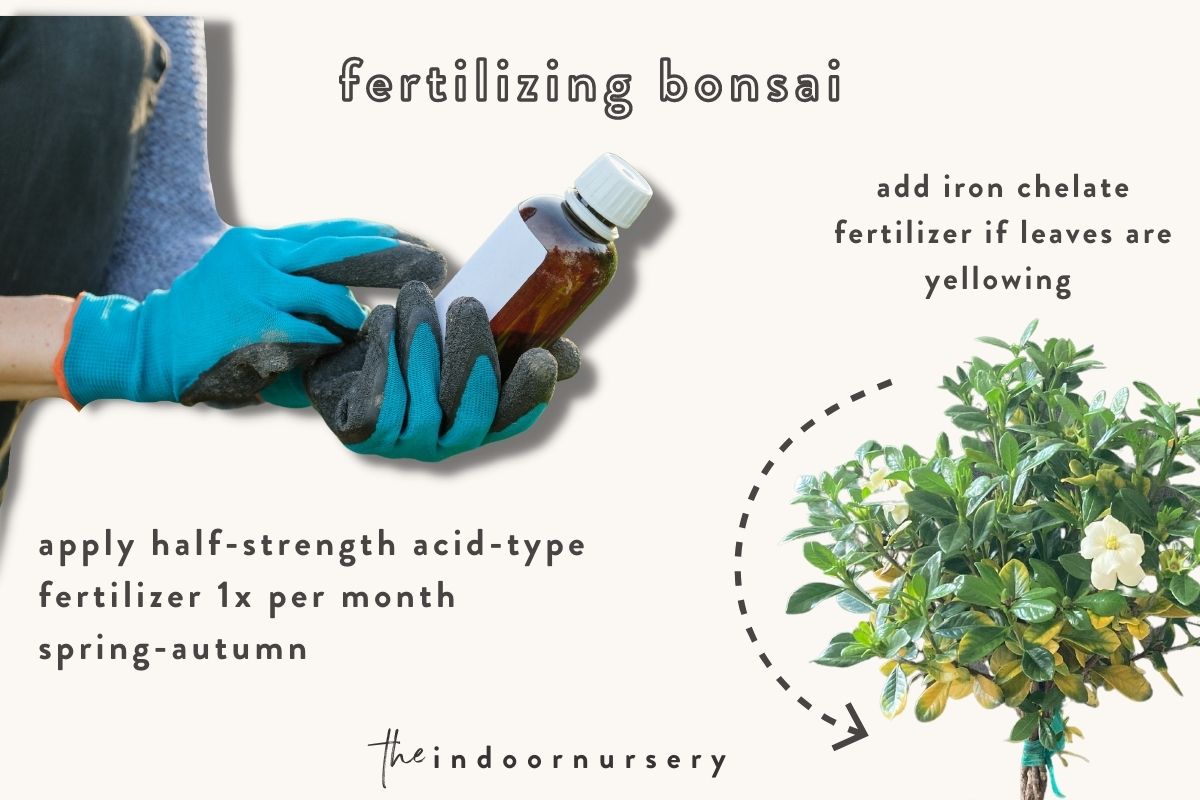
It is advisable to use half-strength acid-type fertilizer once a month from the onset of spring through autumn. You can opt for either a slow release pellet or a liquid fertilizer.
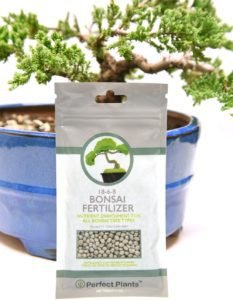

If you notice that some new leaves are turning yellow with green veins, you may apply iron chelate fertilizer to improve their appearance.
Keep in mind that gardenia flower buds are prone to drop off before they start to bloom. Various factors may cause this condition such as over or under watering, insufficient amount of light, night temperatures exceeding 70 degrees, sudden changes in temperature, and premature bud drop. Another possible reason why older leaves turn yellow or drop off include frequently dry soil, so make sure you follow watering requirements to prevent this from occurring.
repotting gardenia bonsai tree
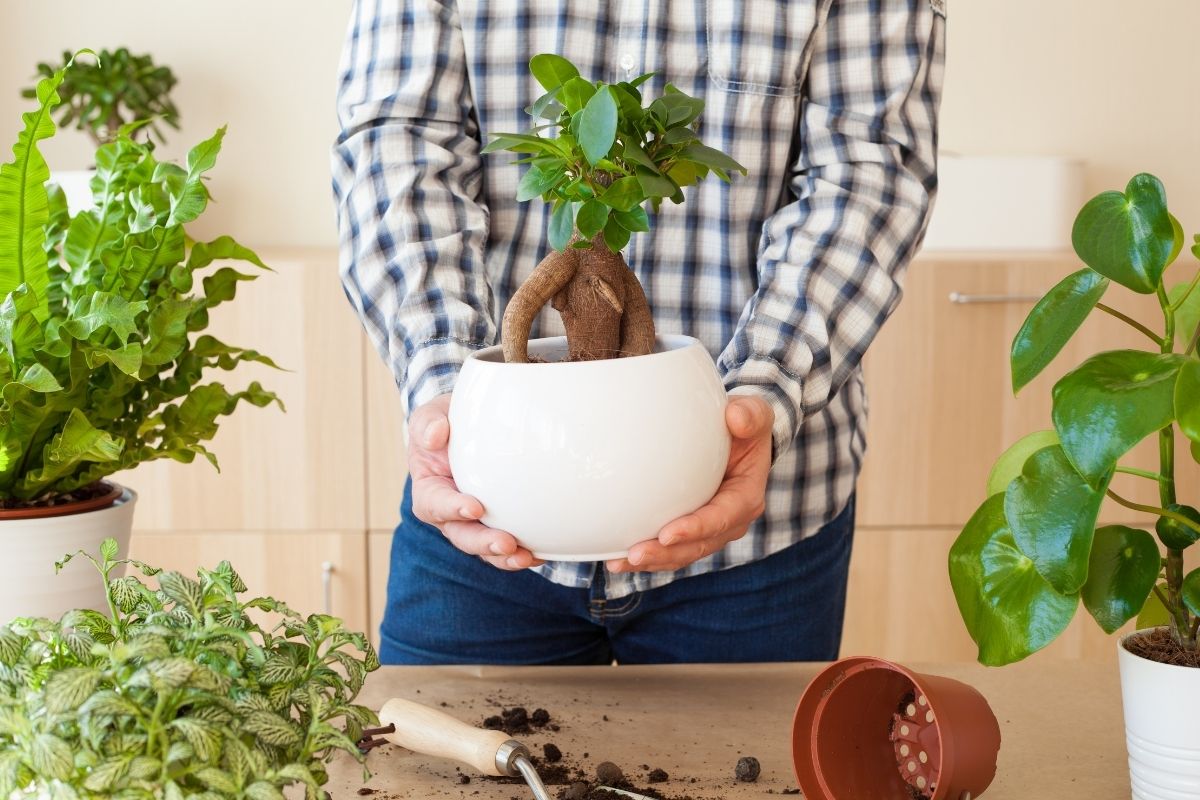
As most experts will agree, the gardenia plant is an acid-loving plant, so it’s best suited for a soil mixture that is a bit more acidic. A good practice is to mix potting soil for acid-loving plants with a mix that is specific to bonsai plants.

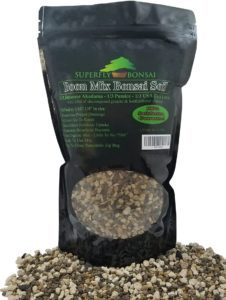
Another common recommendation for gardenia care is to mix equal parts Akadama, pumice, and lava rock.

learn more about bonsai plants
- How to keep bonsai leaves small
- How long do bonsai trees live? Longer than you.
- How to care for your Japanese black pine bonsai
- How to grow aqua bonsai (water bonsai)
- How to care for a Red Maple bonsai tree
- Pomegranate bonsai tree care guide for beginners
- 15 bonsai styles and shapes that will inspire you
- Bonsai palm tree care: How to care for palm tree bonsais

